Pelican
Pelicans are undoubtedly most famous for their characteristic pouch. These large aquatic birds make up their own taxonomic family, Pelicanidae, which consists of eight different species. Pelicans are predominantly light colored, with the exception of two species that are brown. Read on to learn about the pelican.
Description of the Pelican
These creatures are large aquatic birds with very long beaks. They also have long necks to match their long bills. The lower half of their beaks has a flexible skin pouch, known as a “gular pouch.” This expandable pouch allows them to capture multiple fish at once.
Short, webbed feet help these aquatic birds swim while in the water. Most species have white or cream colored feathers with black or brown accents. The Peruvian pelican and the brown pelican have brown colored feathers.
Interesting Facts About the Pelican
Pelicans are surprisingly adept predators, and have multiple adaptations (besides the impressive beak) that help them hunt and survive. What fun facts will you learn about pelicans today?
- Death Defying Dives – Brown pelicans hunt fish by flying low above the water, spotting a school of fish, and flying high above it. Then, from up to 60 ft. in the air, they dive face first into the school of fish. Oftentimes the birds will hit the surface of the water at 41 mph or more!
- Safety Equipment – They survive these dangerous dives by rotating their bodies to the left to avoid impact on their trachea and esophagus. Brown pelicans are also equipped with in-flight airbags. Beneath their skin, pelicans have multiple air sacs across their breast. These air sacs cushion the impact when they hit the water – just like your car’s airbags!
- Unaquatic Aquatic Birds – Surprisingly, brown pelicans are the only species that dives beneath the surface of the water, and they don’t even dive below 6 ft. or so! Instead of swimming underwater to hunt fish, most pelicans use their long bills as harpoons of a sort.
- Heavy Machinery – Carrying around such a lengthy beak doesn’t come without its costs. These birds are actually unable to fly without folding their necks back into an “s” shape. This allows them to rest the heavy beak on top of their bodies and stabilize their flight.
Habitat of the Pelican
Pelicans seem to prefer warmer regions, but they do breed at latitudes as far as 45º South and 60º North. They prefer living and hunting in inland and coastal water bodies, and are largely absent from polar regions, the open ocean, and isolated islands.
Distribution of the Pelican
The eight different species of pelican can be found on every continent except for Antarctica. They seem to prefer warmer habitats, but can be found virtually worldwide.
The American white pelican is found in North America and Mexico. The brown pelican is found in North America, northern South America, the Caribbean, and the Galapagos. The Peruvian species is found in Central and South America.
The great white pelican ranges from the eastern Mediterranean to South Africa. Australian pelicans are found in, you guessed it, Australia!
They are also commonly seen in New Guinea, New Zealand, and some surrounding islands. Pink-backed pelicans are native to Africa and Arabia, and were once found in Madagascar as well. Finally, the Dalmatian and spot-billed pelicans are native to Asia.
Diet of the Pelican
For the most part, these birds prefer to eat fish, but they have been known to prey on other food sources as well. Some occasional odd meals include crabs, insects, frogs, turtles, birds, and small mammals. Different species of pelicans have different feeding strategies.
Some species will fly low in groups and drive schools of fish into the shallows before scooping them up. Other species will fly above the surface and make short dives to capture fish.
Pelican and Human Interaction
Humans are incredibly detrimental to pelicans. Many fishermen view them as direct competitors for fish and will kill them out of retaliation. This is particularly unfortunate because the species of fish consumed by most of these birds does not overlap with those captured by commercial fisheries. Sadly, this belief led to the harassment and culling of large numbers of birds.
We also indirectly impact the survival of these birds (along with many other animals). Pollution causes prey populations to plummet and can lead to dangerous bioaccumulation in predatory birds. Just like the peregrine falcon, the pesticide DDT caused massive declines in pelican populations. Oil spills also cause large numbers of mortality in pelicans.
Domestication
Pelicans have not been domesticated in any way.
Does the Pelican Make a Good Pet
In many places it is illegal to own a pelican as a pet, because they are protected under the Migratory Bird Act. These animals are wild, and require lots of space to fly, and plenty of fish to eat. It can be difficult to provide this in a private setting.
Pelican Care
In zoos, pelicans are given plenty of enclosure space for flight, lots of perches at various heights, and plenty of water sources for wading, floating, and eating fish. They are given a diet of, you guessed it, fish! Depending on the pelican species, they are frequently fed sardines, smelt, herring, trout, and mackerel.
Behavior of the Pelican
These birds are quite social, and will roost and lounge in groups. They can be seen together on beaches, in shallow water, and on sandbanks. Because they live primarily in warm climates, they have an effective method of dissipating heat from their bodies.
They use their versatile pouch as a type of air conditioner. By waving the skin of their pouch, a process called “gular flutter,” they employ evaporative cooling. Water evaporates more quickly from their skin, and their temperature decreases.
Reproduction of the Pelican
Pelicans breed in massive colonies, and each pair chooses a small nest territory and defends it from other birds. They are monogamous during each breeding season, and both parents care for the chicks. The female bird lays two or three eggs in the nest, which is usually made from sticks, and both parents incubate the eggs.
After about one month the eggs will hatch, but usually only one chick survives the first few weeks of life. Both parents feed the chicks by regurgitating fish. By the time the chicks are three months old they will begin to learn how to fly, and quickly become independent.

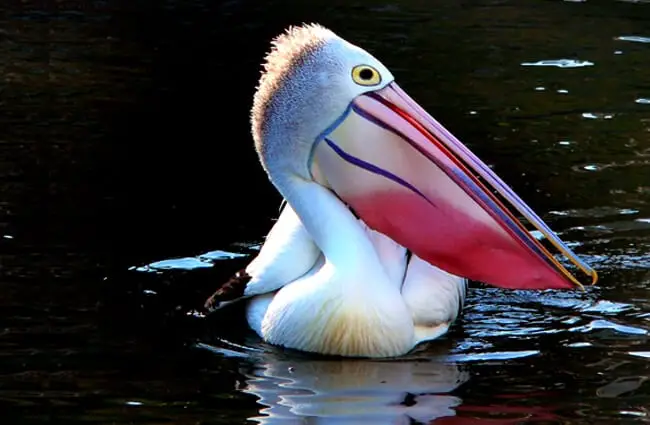

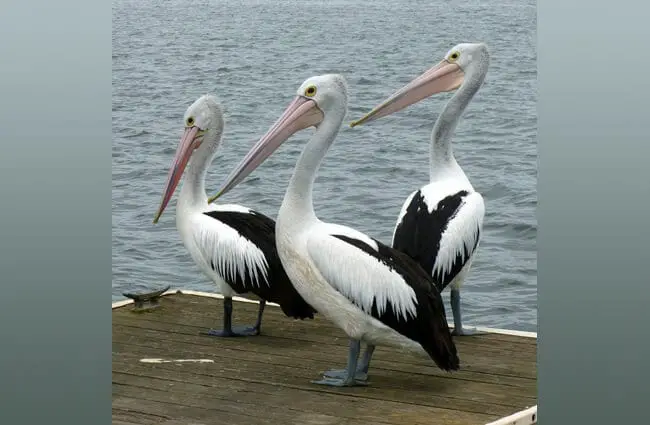






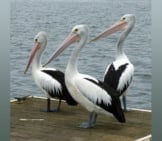
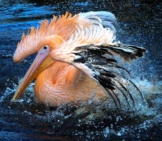

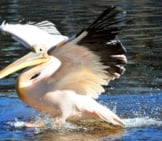
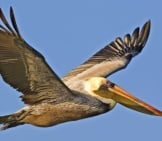
![Red Angus Closeup of a beautiful Red Angus cowPhoto by: U.S. Department of Agriculture [pubic domain]https://creativecommons.org/licenses/by/2.0/](https://animals.net/wp-content/uploads/2020/03/Red-Angus-4-238x178.jpg)












![Red Angus Closeup of a beautiful Red Angus cowPhoto by: U.S. Department of Agriculture [pubic domain]https://creativecommons.org/licenses/by/2.0/](https://animals.net/wp-content/uploads/2020/03/Red-Angus-4-100x75.jpg)

